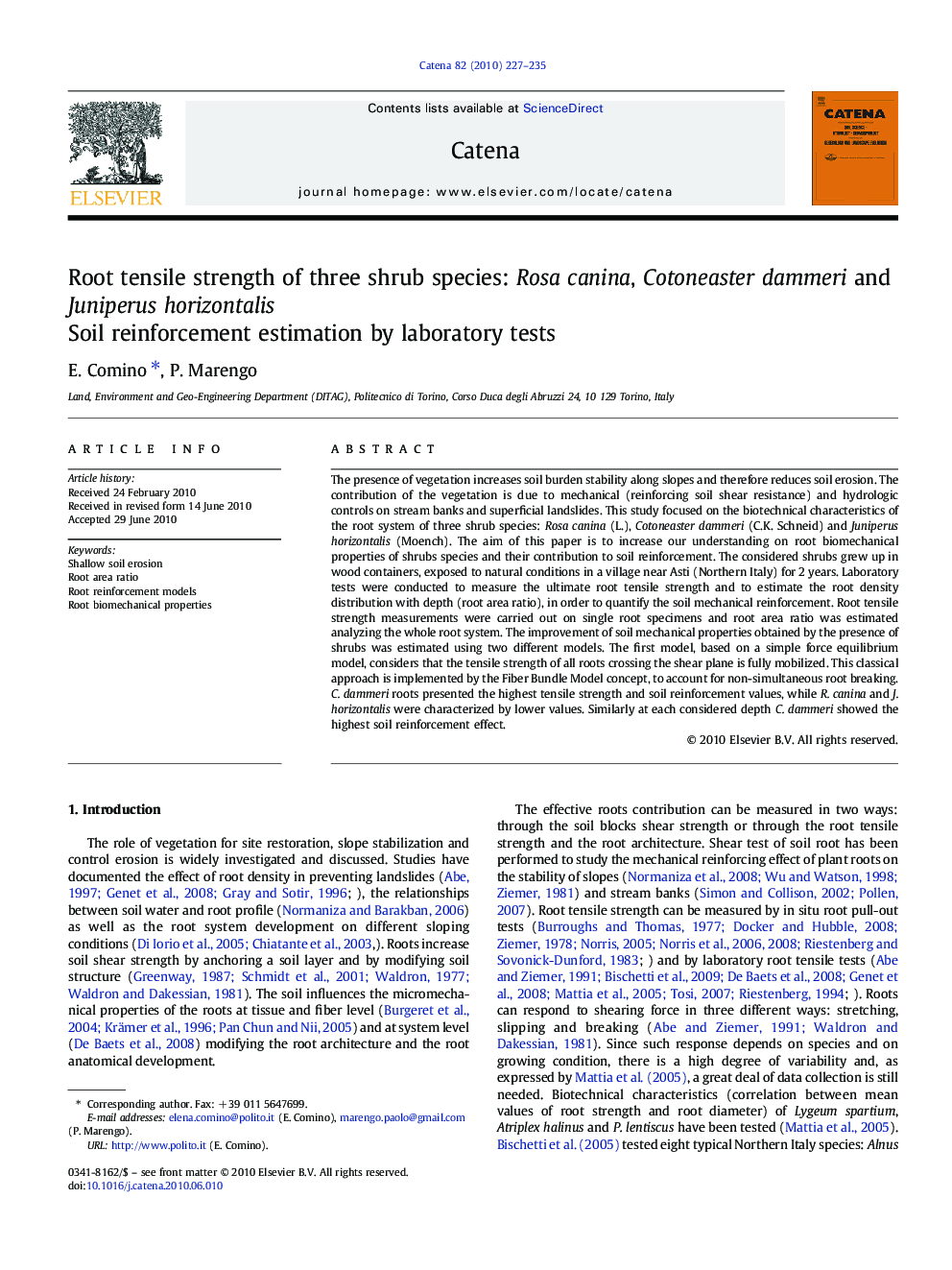| Article ID | Journal | Published Year | Pages | File Type |
|---|---|---|---|---|
| 4572160 | CATENA | 2010 | 9 Pages |
The presence of vegetation increases soil burden stability along slopes and therefore reduces soil erosion. The contribution of the vegetation is due to mechanical (reinforcing soil shear resistance) and hydrologic controls on stream banks and superficial landslides. This study focused on the biotechnical characteristics of the root system of three shrub species: Rosa canina (L.), Cotoneaster dammeri (C.K. Schneid) and Juniperus horizontalis (Moench). The aim of this paper is to increase our understanding on root biomechanical properties of shrubs species and their contribution to soil reinforcement. The considered shrubs grew up in wood containers, exposed to natural conditions in a village near Asti (Northern Italy) for 2 years. Laboratory tests were conducted to measure the ultimate root tensile strength and to estimate the root density distribution with depth (root area ratio), in order to quantify the soil mechanical reinforcement. Root tensile strength measurements were carried out on single root specimens and root area ratio was estimated analyzing the whole root system. The improvement of soil mechanical properties obtained by the presence of shrubs was estimated using two different models. The first model, based on a simple force equilibrium model, considers that the tensile strength of all roots crossing the shear plane is fully mobilized. This classical approach is implemented by the Fiber Bundle Model concept, to account for non-simultaneous root breaking. C. dammeri roots presented the highest tensile strength and soil reinforcement values, while R. canina and J. horizontalis were characterized by lower values. Similarly at each considered depth C. dammeri showed the highest soil reinforcement effect.
